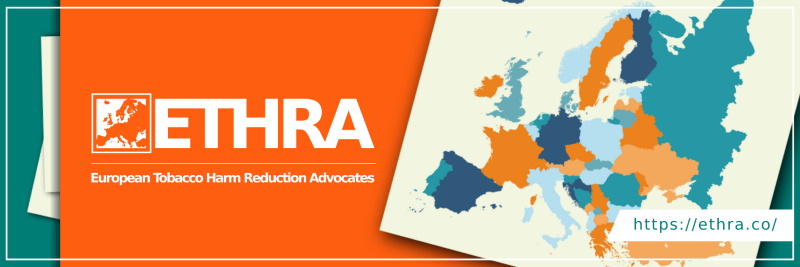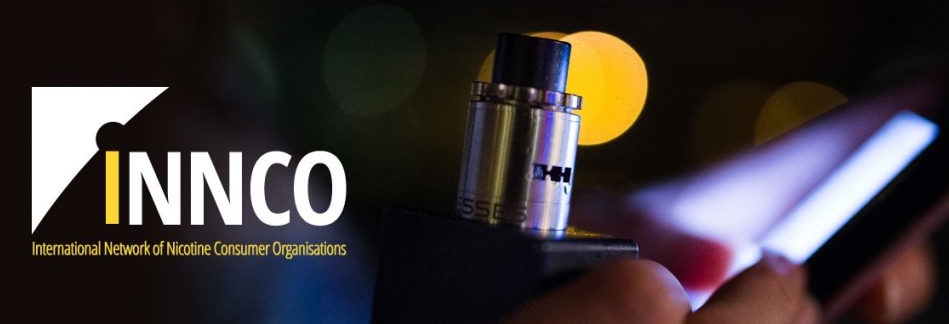Vapers Digest 9th September

Monday’s News at a glance:
Mexican Warning – UKVIA Welcomes Licensing Proposals – New protocol aims to investigate the impact of different pattern of ENDS use on respiratory effects – Sweden leads Europe in reducing smoking – New Paper Analyses Nicotine Pouch Advertising – Inaugural 988 day in the US – Canada bans sale of nicotine pouches outside of pharmacies – Better access to vapes could save 880,000 – Congressional Grilling of Center for Tobacco Control – CDC Data Exposes False Youth Vaping Epidemic – Half of U.S. voters peeved with FDA –
Mexican Warning
Dave Cross, Planet of the Vapes
Dr Roberto Sussman has issued words of warning about a very worrying and ominous development on the prohibition of vapes in Mexico. He says this situation is generally not known outside of Mexico; indeed, he adds, there is little awareness even in Mexico. The outgoing authoritarian populist Mexican president, Andrés Manuel López Obrador, is attempting to harden the vape prohibition by giving it “constitutional rank”.
“As far as I am aware, there is no precedent in any western country where the constitution explicitly prohibits a commercial product,” says Dr Roberto Sussman.
UKVIA Welcomes Licensing Proposals
Dave Cross, Planet of the Vapes
The UK Vaping Industry Association welcomes the support for introducing a vape licensing scheme shown by Baroness Merrion this week. Speaking during a House of Lords debate on youth vaping, the Parliamentary Under-Secretary of State at the Department of Health and Social Care said the government was ‘actively considering’ a vape licensing scheme.
The UKVIA has long supported the introduction of vape licensing to fund a nationwide Trading Standards enforcement programme to clamp down hard on rogue retailers who sell illicit products or sell to those under 18.
New protocol aims to investigate
The impact of different pattern of ENDS use on respiratory effects
Center of Excellence for the Acceleration of Harm Reduction
CoEHAR researchers published a new protocol for an umbrella review to present all the evidence available on the respiratory effects of ENDS use by adults based on their pattern of use
Electronic nicotine delivery systems have now become a well-established choice for many smokers and vapers. These devices, according to a growing body of studies and researches, result in lower exposure to toxins and harmful components compared to cigarette smoke.
However, at the same time, users’ preferences lean toward different types and patterns of consumption. Some people who use ENDS also smoke cigarettes (dual use).
Disposable e-cigarettes (PDF)
Use and appeal for smoking cessation in adults – CRUK
The regulation of e-cigarettes is a rapidly evolving policy area. This research was conducted in a context in which councils throughout the UK were calling for bans on disposable e- cigarettes. In mid-January, shortly following the end of fieldwork for this study, the UK Government announced its intention to legislate to ban the sale of disposable e-cigarettes21. In
addition to an outright ban on the sale and supply of disposable e-cigarettes, the Government also announced plans to introduce measures restricting flavours ‘specifically marketed at children’, introduce plainer, less visually appealing packaging, change point-of-sale displays in shops, and increase fines for shops found to be illegally supplying e-cigarettes to those aged
under 18.
Sweden leads Europe
In reducing smoking with nicotine pouches
Nicotine pouches have gained acceptance in multiple Scandinavian countries as an aid for quitting smoking, such as Sweden, Norway, Finland, and Iceland.
Sweden has led the way in encouraging the use of tobacco alternatives such as nicotine pouches and snus.
These products have been crucial in lowering the number of smokers and deaths from lung cancer in the country.
New article on “Speech Regulation and Tobacco Harm Reduction” with @jacobjamesrich in Journal of Free Speech Lawhttps://t.co/xLIoz73UIy
— Jonathan H. Adler (@jadler1969) September 9, 2024
New Paper Analyses Pouch Advertising
Joseph Hart
A new media analysis of nicotine pouch advertising was published in the Nicotine and Tobacco Research Journal. Titled Sports, Gigs, and TikToks: Multi-Channel Advertising of Oral Nicotine Pouches, the pre-print is a collaboration between the University of Queensland and University College London. More specifically, it’s brought to us by Tianze Sun and Harry Tattan-Birch. Both are reputable academics involved in sensible research around nicotine and tobacco.
Indeed, Tattan-Birch’s last paper, Secondhand Nicotine Absorption From E-Cigarette Vapor vs Tobacco Smoke in Children, was perhaps the final nail in the preposterous secondhand vaping canard.
Inaugural 988 day in the US
Kim “Skip” Murray
September is Suicide Awareness Month. September 8th is the inaugural 988 day to raise awareness for suicide prevention and the 988 suicide and crisis lifeline. I am grateful to see that crisis lines are available in many countries.
What does all of this have to do with a THR newsletter? I’m glad you asked! As most of you know, people with mental health challenges and/or substance use disorders smoke at a higher rate than the general population.
Expert Reaction to
Unpublished conference abstract on vaping, smoking and exercise
“There are several reasons to be cautious about the findings of this study and the way in which the press release has been phrased. I list below some of the key limitations.
“Firstly, this is unpublished research, and so independent scientists have not yet scrutinised the methods and the results. Peer review is a crucial part of the scientific process and it is a major concern that these findings are being widely disseminated without this scrutiny.
Two from Ali Anderson, Clearing the Air:
Canada bans sale of nicotine pouches…
Outside of pharmacies
The Canadian government has banned the sale of nicotine pouches outside of pharmacies. The move, which took effect on August 28, also includes strict advertising restrictions and a ban on certain flavours said to be targeted at young people.
All fruit flavours have been recalled, with only mint and tobacco flavours remaining on sale. Health minister Mark Holland said: “There’s a couple of things that are going to happen. The first is these products are going to be moved behind the counter.
Better access to vapes…
Could save 880,000 lives in Malaysia and Uzbekistan
Better access to vapes and other nicotine alternatives could save up to 880,000 lives in Malaysia and Uzbekistan, a major new report has revealed. Contrary to global trends, smoking rates in the two countries – where lawmakers have heavily regulated vapes alongside far more dangerous cigarettes – are set to rise over the next few years.
The World Health Organisation (WHO) predicts that smoking in Malaysia will increase from 29.7 per cent in 2020 to 30 per cent in 2025, with 18,000 lives being lost to tobacco-related illness annually by 2060. In Uzbekistan, the WHO estimates that the annual number of deaths linked to smoking will average 20,000 by 2060.
Congressional Grilling of …
Center for Tobacco Control
Tomorrow morning, the beleaguered head of the Food and Drug Administration’s Center for Tobacco Control (CTP) Brian King, will be forced to testify before the House of Representatives Energy and Commerce Health Subcommittee on the multiple failings of his agency.
This hearing is as a result of lawmakers multiple frustrations and the CTP’s refusal do the job Congress and taxpayers have tasked it with, and could not come soon enough. Under King’s leadership, the CTP has lurched from scandal to scandal.
Voters Overwhelmingly Demand…
FDA Reform & Tobacco Harm Reduction
American voters overwhelmingly recognize the urgent need to reform the failing Food and Drug Administration (FDA) and that it helps smokers quit through proven harm reduction technologies like vaping, nicotine pouches, and new reduced risk products according to newly released polling.
Widescale polling conducted by conducted by RG Strategies and Peak Insights showed that a staggering 74% of Americans believe FDA needs significant overhaul, while a plurality were particularly dissatisfied with FDA’s approach in stonewalling the approval of products that help smokers quit.
Interview mit Bengt Wiberg –
Perspectives on Nicotine GFN24
CDC Data Exposes False Vaping Epidemic
Newly Released Data from the Centers for Disease Control and Prevention 2024 National Youth Tobacco Survey delivered another exceptional exoneration for tobacco harm reduction advocates, as current (past-30 days) youth e-cigarette use drops to the lowest level in a decade, a 23% decrease in just one year. Daily use of e-cigarettes by middle and high school students is as low as 1.55%.
E-Cigarettes are proven to be 95% safer than combustible tobacco and are used by over 20 million adult Americans to either quit or reduce their smoking.
New Approaches to Smoking Cessation
Among People Who Use Drugs
Half of U.S. voters peeved with FDA
54% of survey respondents said they believe smoking rates would go down faster if the FDA encouraged smokers to utilize less-harmful alternatives to cigarettes.
A majority of likely General Election voters have lost faith in the Food and Drug Administration, indicating in a recent poll that they believe the agency is failing to help Americans be healthy and live longer. About half of respondents think the agency should return to the drawing board to achieve its health goals better.
Next-Generation Products
to Differentiate Global Tobacco Profiles
Business risk profiles of global tobacco companies are increasingly differentiated by the successful development of reduced-harm, smoke-free next-generation products (NGPs), which offer growth potential for the industry and help mitigate declining cigarette sales volumes.
Tobacco companies now focus on implementing harm-reduction and NGP strategies including vapour, heat-not-burn and oral nicotine offerings for revenue and profit growth, according to our Global Tobacco – Relative Credit Analysis report, although the industry retains good pricing power in combustible products.
On this Day…2023
A look back at how things have moved on or otherwise…
Sweden Reduces Tax on Snus by 20%
World Vapers’ Alliance
On track to achieve a smoking rate below 5%, Sweden has taken yet another progressive step in the realm of harm reduction, solidifying its leadership role among the EU countries. Today, the Swedish government has announced its plan to reduce the tax on snus, a smokeless tobacco product, by 20% while increasing the tax on cigarettes and smoking tobacco by 9%.
Michael Landl, Director of the World Vapers’ Alliance, commented:
“Sweden’s new taxation policy is an exemplary move in fast-tracking the country even further towards its smoke-free target. By making less harmful alternatives like snus more accessible through tax reductions, Sweden is not just theorising harm reduction; it’s effectively implementing it. It’s time for the EU to take a leaf out of Sweden’s book.”
Finland’s Proposal on Nicotine Pouches:
‘A Step Forward’ – Snusforumet
From the vision of a ‘smoke-free Finland’ to a more progressive attitude towards alternative nicotine products. What does Finland’s nicotine pouches policy shift mean for the country’s future? Snusforumet had a chat with Theo Herold, a doctoral student at Hanken School of Economics in Helsinki.
Given Finland’s new stance on nicotine pouches, can you share your take on them and snus?
I advocate for smokeless options like snus, personally seeing their advantages over traditional smoking. Given the EU’s ban contrasted with Sweden’s lower cancer rates linked to smoking, it’s evident many are considering these alternatives.









